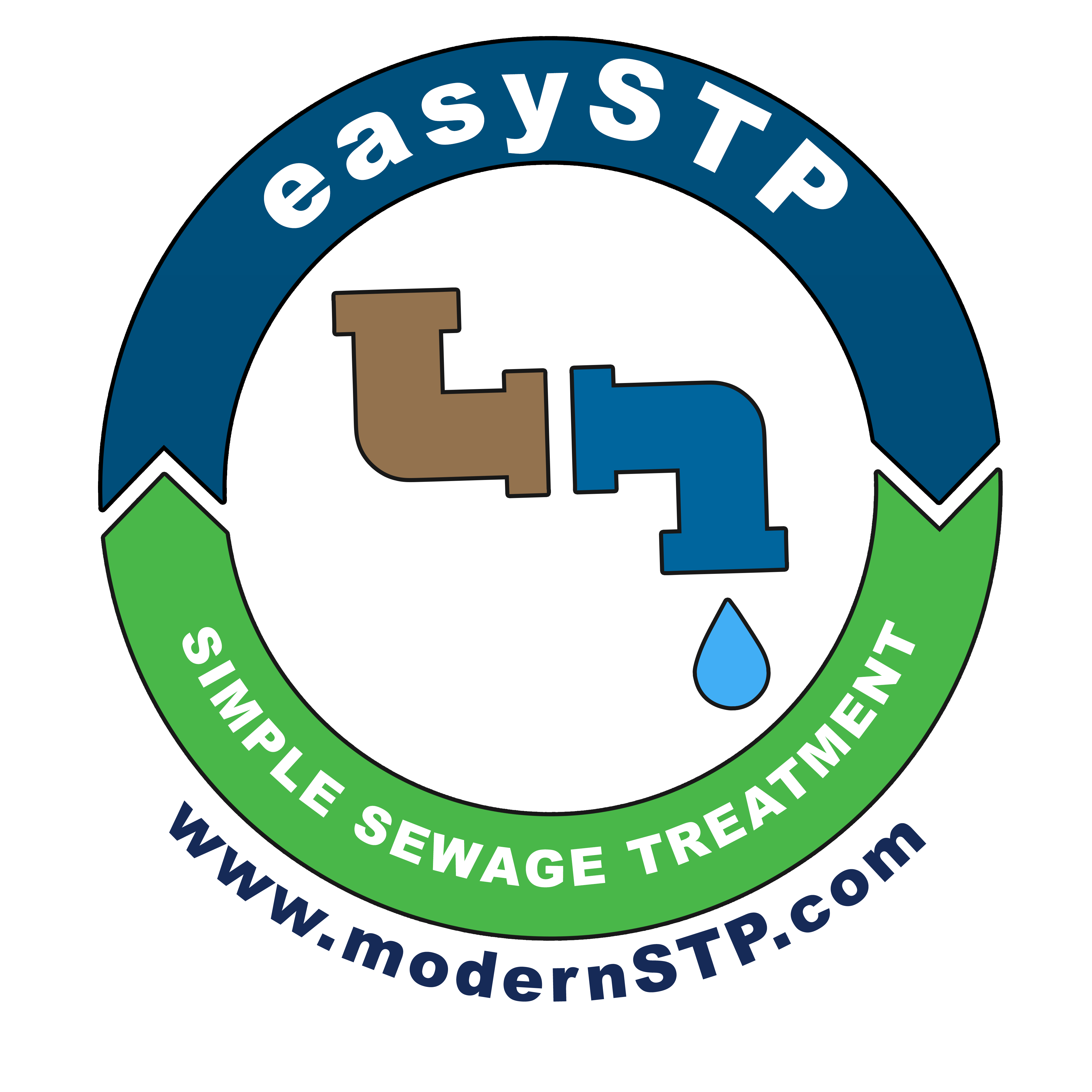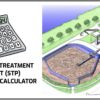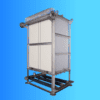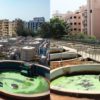Considering purchasing a Sewage Treatment Plant for your home or business? Here are the 10 Tips on How to buy the Right Sewage Treatment Plant.
Sewage treatment plants are an essential part of modern infrastructure and have become increasingly popular (or mandatory) in recent years, as people become more aware of the importance of responsible wastewater management. They play a vital role in ensuring clean and safe water for communities around the world. Proper Sewage Treatment Plants prevent the spread of waterborne diseases.
STP is an engineering product and not something that you can buy off the shelf and install it in your place like an air conditioner or washing machine, and it’s important to note that not all sewage treatment plants are created equal.
With so many options on the market, it can be challenging to know where to start.
To ensure you get the most effective and efficient system for your needs, here are a few things to consider before buying a Sewage Treatment Plant (STP).
Table of Contents
1. The Purpose of installing the STP
If you understand the main reason for setting up the STP, you can choose the right process and equipment. Some of the popular reasons why people install STPs are:
- To prevent pollution / foul smell in the locality
- To get local government (municipality) or Pollution Control Board approval
- To re-use treated water to overcome water shortage
2. The Disposal of Treated water
Second most important thing is to consider the available options for disposing treated water. This may not be your decision alone. You may have to consider local regulations and site conditions.
If the STP has to be installed in a farmhouse, the treated water may be used for gardening. Remember, Gardening is also a way of disposing off treated water into the land.
If the STP is installed in an apartment complex generating say 50,000 Litres per day, it needs 5 acres of land to dispose off. When the treated water is used in flushing, about 30% can be used. The remaining 70% has to be disposed off either into municipal drains or any open nala (which usually flows into the nearby lake).
However, such disposal of treated water into drains is usually not permitted by local governments as they could pollute lakes. Disposal of treated water is always a tricky issue especially in large projects.
Proven Treatment processes for 100% reuse are available but are expensive to own and operate also. It is known as Zero Sewage Discharge / Zero Liquid Discharge (ZLD). The recovered water cost can be around Rs. 15 to Rs. 20/- per KL.
To summarize this concept, you need the most basic sewage treatment plant if you wish to dispose of treated water into land for irrigation. You need additional equipment called Tertiary Treatment if you wish to use the water for low quality reuse like flushing. You need advanced Treatment like Ultrafiltration and Reverse Osmosis if you wish to reuse 100% of treated water. While deciding on the equipment, you MUST consider the reason for setting up the STP also.
3. STP Capacity
My personal experience is that most STPs are over designed / have more capacity than what is essential. Lack of awareness about the sizing and STP vendors being extra cautious leads to over design. As per the Ministry of Urban Development, Govt of India, a person in his home uses 150 litres of water everyday. From this 90% i.e., 135 litres comes out as Sewage.
The usual practice is to arrive at the number of people discharging water into the STP- be it from homes or offices or Factories.
Sample Sewage Generation Data:
Residential User: 135 Litres per person per day
Hostel: 90 to 100 Lites / resident / day
Hotel: 250 Litres to 400 Litres per room per day (depending on hotel star rating)
Hospital: 300 Litres to 450 litres per bed per day
Factory: 40 Lts per employee per day
We have to calculate the number of users for the given establishment and multiply with per capita sewage to arrive at the STP capacity.
4. Continuous Vs Batch Process
Sewage can be treated in a continuous or batch process depending on the type of user. A batch process is more desirable in a situation where the sewage volume is fluctuating every day. For example in a hotel or a hospital, the wastewater volume will depend on the occupancy. It is advisable to use a batch process in such projects. Batch processes would need more automation and higher process control and as a result, costs more. It also needs more experienced operators. Sequencing Batch Reactor (SBR) is an example of Batch Process.
In a residential apartment complex, the number of people may vary by 5% to 10% at the most and the sewage volume will be more or less fixed. Continuous process is more suitable for such projects. Continuous processes will have less equipment, lower level of automation and even less experienced operators can run the STP effectively. Moving Bed Bio Reactor (MBBR), Membrane Bio Reactor (MBR) are some of the popular continuous processes.
5. How STP works?
Sewage is 99.95% water and 0.05% impurity. We throw away this 99.95% because of the 0.05% impurity. All that we do in any STP is separate / remove this 0.05% impurity from the 99.95% water.
We have to first understand what we are removing from water to know how the process works. The 0.05% impurity in sewage comprises of physical impurities (like plastic cover, soil, sand, leaves, food particles etc), floating impurities (like Fats and Oils), dissolved impurities (like hydrocarbons, Ammonia, Phosphate) and finally microbes like bacteria and virus.
Removal of large physical impurities is done with a perforated screen, oil is allowed to float in an oil and grease chamber. The dissolved organic impurities are the main culprit in sewage. Thankfully dissolved organic impurities are food for some types of bacteria. So if you allow bacteria to grow in sewage it eats the content we wish to remove and sewage becomes free from dissolved organics. If we have more impurities, you need more bacteria and more time for the bacteria to consume. When there is no more food, bacteria dies and sewage becomes water.
Dead bacteria is allowed to float and sink in settling tanks and clear water comes out. Any remaining bacteria is destroyed using chlorine or bleach or UV radiation.
Even bacteria need oxygen to survive and grow. Hence every STP has a system of pumping atmospheric air into sewage.
5. Aerobic Vs Anaerobic Process
We often come across the high sounding names of aerobic and anaerobic processes. Aerobic bacteria need oxygen from external sources (like air pumps) whereas anaerobic bacteria don’t depend on external oxygen. Aerobic process consumes more energy while the anaerobic process works without any power requirement. Both have advantages, an aerobic system may be better suited for removing organic matter, while an anaerobic system may be more effective at removing nitrogen and phosphorus.
Most modern STPs use a combination of aerobic and anaerobic processes for better quality water.
6. Installation
Sewage Treatment is traditionally carried out in RCC tanks or open ponds. Nowadays small capacity STP tanks are made in FRP reducing the cost and construction time. The FRP Sewage Treatment plants being factory made offer better process control.
Large capacity STPs typically involve excavation, Civil Construction, Installation of electro-mechanical equipment, plumbing, and electrical work.
7. Maintenance
Simply put there can’t be an STP without Maintenance. If you are planning for a Sewage Treatment Plant, you MUST Plan in advance for maintenance.
For the record, more than 50% of STPs installed are not working. The reason is lack of maintenance. Sewage Treatment Plants designed with conventional processes have a lot of equipment and need regular maintenance. STPs with more equipment and more advanced technology need more maintenance and higher quality manpower to operate the same.
Consider maintenance and availability of manpower while purchasing the new STP.
8. Cost
Capital Cost (Capex): This is the cost of land, construction cost, electro-mechanical equipment cost put together.
Operating Cost (Opex): This includes electricity cost, manpower cost, maintenance and breakdown repair cost.
Wherever possible opt for a Sewage Treatment process that offers lower operating cost with minimum manpower requirement.
9. Durability and Reliability
A sewage treatment plant is a significant investment, so you want to ensure that it’s durable and reliable. Look for a system that’s built to last and can withstand the elements. It’s also essential to choose a system that has a proven track record of reliability. You don’t want a system that’s prone to breakdowns or malfunctions, as this can be costly and time-consuming to repair.
10. Local regulations
Before purchasing a Sewage Treatment Plant, be sure to research local regulations to ensure that you are compliant. Some areas may require specific permits or have restrictions on the use of certain types of plants.







